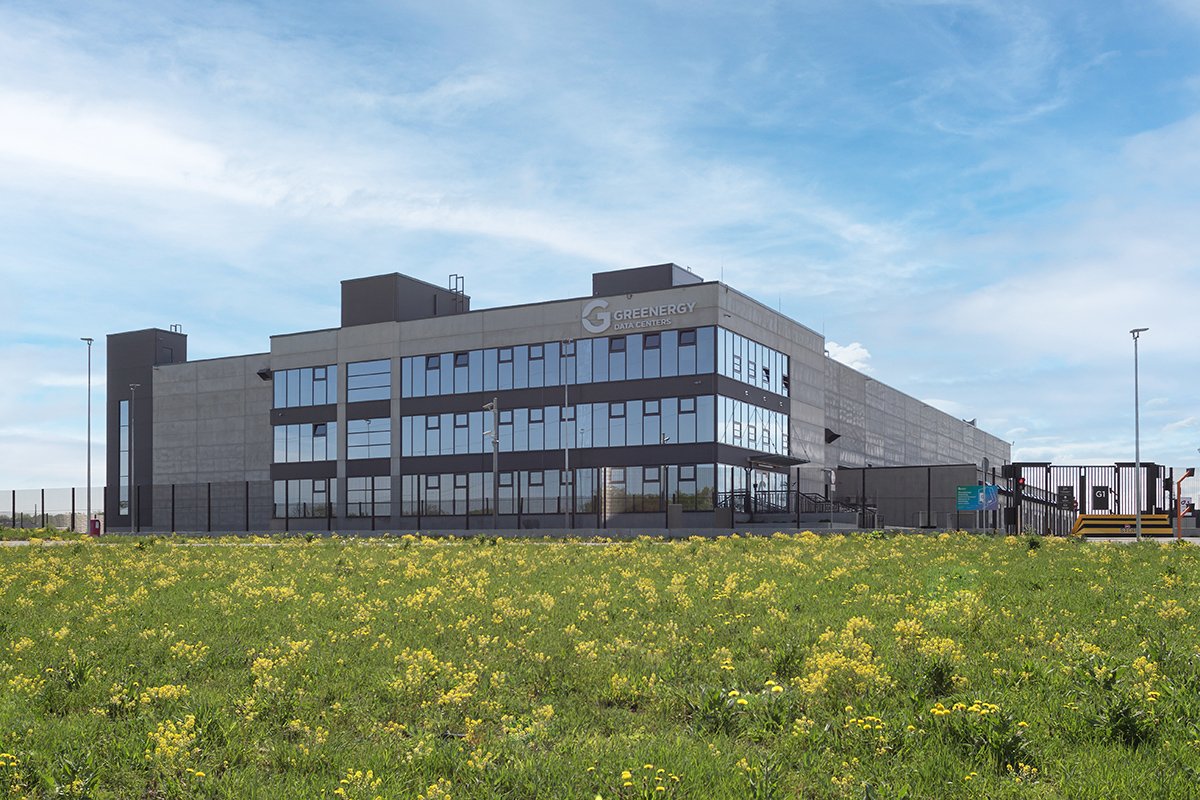Where is the Internet?
A story from the series ‘Online World 101’, where we explain complicated things as simply as possible.
You probably use the Internet every day. But does the Internet physically exist?
Data center facility. Photo by: Andres Oolberg.
In reality, every e-service and every bit of information in it has to be physically located somewhere. Each query and response thereto. Every picture, text, and video. As a rule, servers and connected IT devices are what accept, process, store, and provide information. These devices are, in turn, located in data centers.
So, if you pay in a shop with a card, you are using a data center; if you hail a taxi with an app, you are using a data center; if you get a response from ChatGPT, you are also using a data center. Much like the foundations of a skyscraper, this part of our daily lives is usually invisible to the naked eye.
The main misconceptions
According to Tõnu Grünberg, CEO of Greenergy Data Centers, the largest data center in the Baltics, there are two common misconceptions about data centers.
‘First, that they generate data. That this is where code is written or databases are created. This is what the name seems to suggest. In reality, the data center itself does not create anything. We are like bank vaults that hold the gold, but do not produce it. Second, that data centers manage or filter information. In practice, however, this is done by the clients of the data centers, which can be companies, public authorities, international organisations, and others. Simply put, our role is to provide good Internet connections, strict security, and highly reliable power and cooling capacity,’ Grünberg explains.
According to him, a typical client of a data center will have a large fridge-sized equipment cabinet or several, which they will fill with equipment and connect to the network. The customer is responsible for the information and programs stored and handled there. A data center helps to keep these IT devices secure and operational 24/7.
For example, the largest data center in the Baltics contains enough of such cabinets to cover two football fields.
‘To draw further comparisons, a data center is like a bridge, and the data are cars. The bridge does not determine which cars drive there. However, there is nowhere for cars to go if there is no bridge. Without data centers, our world would stand still,’ illustrates Grünberg.
Why is it necessary to have separate data centers? Why could IT equipment not be kept at homes or offices?
First, technological progress is largely ‘to blame’ here. As IT equipment becomes more powerful, energy consumption increases. Electricity connections in ordinary homes or offices cannot provide this capacity. Unlike purpose-built data centers, homes or offices often have a single electrical connection – if something happens to the cable, the room goes dark. But if the IT equipment that runs e-services is down, so is much of the organisation’s business. Modern data centers, however, have multiple power sources.
The second thing to ‘blame’ is physics. The more electricity appliances use, the more heat they generate. IT equipment, however, does not like heat. That means we need to get rid of it. In a typical home or office, this can quickly become a problem, as the skills and capabilities to create and manage flexible cooling systems are limited. In modern data centers, cooling is provided by a machine learning-based artificial intelligence that can keep IT equipment at the right temperature in an energy-efficient way. In addition, the heat generated is recycled – it is used for heating the premises or water, not just let outside.
Third, there are economic reasons. Just as it makes sense to have a physical shop in a shopping center where the ideal conditions are created, it makes sense to keep servers in a place designed and built for this purpose. It is simply more cost-effective overall.
But why do we need data centers when we have the cloud?
We talked about misconceptions before – this is another one. ‘Eventually, every cloud will also need IT equipment and a data center to serve its customers. Each cloud is a very physical set of equipment. For example, several cloud service providers host equipment with us,’ Grünberg explains.
The world’s largest cloud service providers have hundreds of data centers. ‘When you upload your photos or videos to the cloud, what you are really doing is uploading them, metaphorically speaking, to someone else’s computer. In that case, it is the equipment of a cloud service provider,’ explains Grünberg. So, clouds cannot do without data centers, either.
Are data centers also somehow related to artificial intelligence, like ChatGPT or Google’s Bard?
Artificial intelligence sets the bar very high for data centers. ChatGPT will answer you over the Internet with ease, but you need massive computing power to make it all happen – both to train the system and to keep it running. To meet the necessary requirements, tech giants are even building dedicated data centers that are capable of channelling significantly more power to the cabinets and can also manage the heat generated. The power demand of such cabinets can exceed 100 kW, which is equivalent to the maximum capacity of an electricity connection of about 7 normal apartments. However, hundreds, if not thousands of such cabinets are needed to train AI, for example.
In short, the Internet as we see it on our computer screens is real. Each bit of information represents data on a physical device. These devices, in turn, are usually located in data centers. The more we rely on data and the Internet in our daily activities, the more reliable and secure data centers we need.

